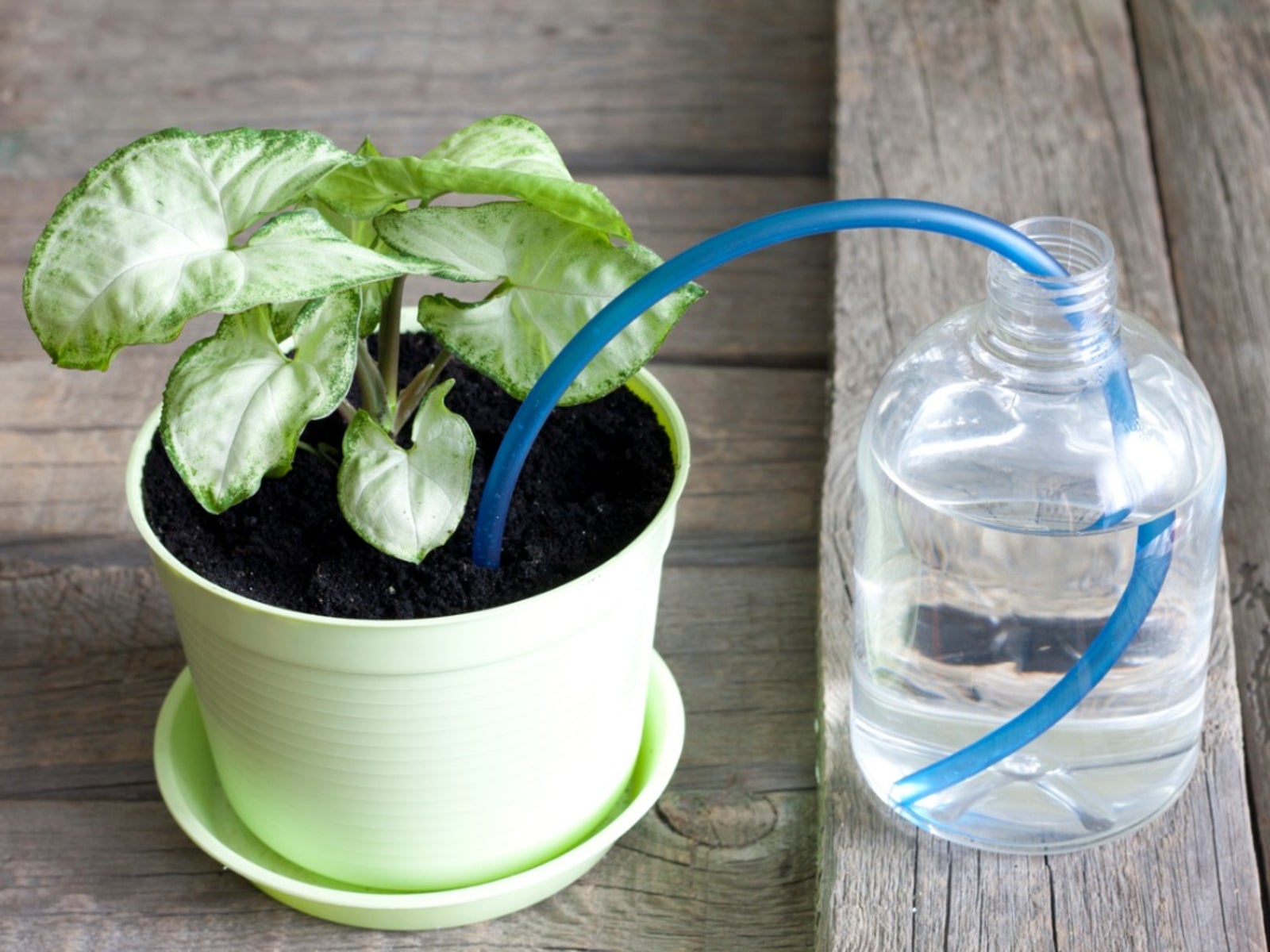Self-Watering Pots: Information About Containers That Water Themselves

Self-watering pots are available from a number of stores and online retailers. You can also build your own using materials as simple as two five-gallon buckets, a piece of screen, and a length of tubing. Since they conserve water by allowing precise control of water usage, these are great containers for drought conditions. These low-maintenance containers are also helpful for people who travel often or who forget to water their plants.
What are Self-Watering Containers?
You can find self-watering containers in every size and shape imaginable, from large planters to small houseplant containers to window boxes. A self-watering container includes two chambers: one for the potting mix and plants and a second, typically underneath the first, which holds the water. The two chambers are separated by a screen or a piece of perforated plastic. Water wicks up from below into the potting mix, keeping the moisture level almost constant as long as the water reservoir is filled whenever it runs low.
How to Use a Self-Watering Container
Choose a potting mix that is appropriate for your plants. Pre-moisten the potting mix and load it and the plants into the upper chamber. Then, simply fill the reservoir with water. As the plant roots take in water, water from the reservoir will gradually move into the potting mix to keep it constantly moist.
With this method of watering, you won’t risk compacting the soil or splashing dirt onto plant leaves, and you won’t get the leaves wet. This will help prevent plant diseases from taking hold. Containers that water themselves have many advantages, but they also have a few disadvantages. They aren’t a good option for growing desert plants or plants that need to dry out between waterings.
Also, because the water does not drain through holes in the bottom of the container, you will need to be careful to prevent salt or fertilizer buildup in the potting mix. Don’t use liquid fertilizer, time-release fertilizer, or water that contains high salt content in these containers.
Compost is the best fertilizer for plants in self-watering containers. If salt buildup does occur, you will probably see the tips and edges of leaves turning brown and dry, and you may see a salty crust on the soil. To fix this, remove the water reservoir (if possible) and flush the soil with lots of fresh water. Alternatively, replace the potting mix each year.
Sign up for the Gardening Know How newsletter today and receive a free copy of our e-book "How to Grow Delicious Tomatoes".
Ilana Goldowitz Jimenez is a scientific and agricultural writer with a B.S. in Plant Sciences from Cornell University and a PhD in Chemical Biology and Infectious Disease from Harvard University.